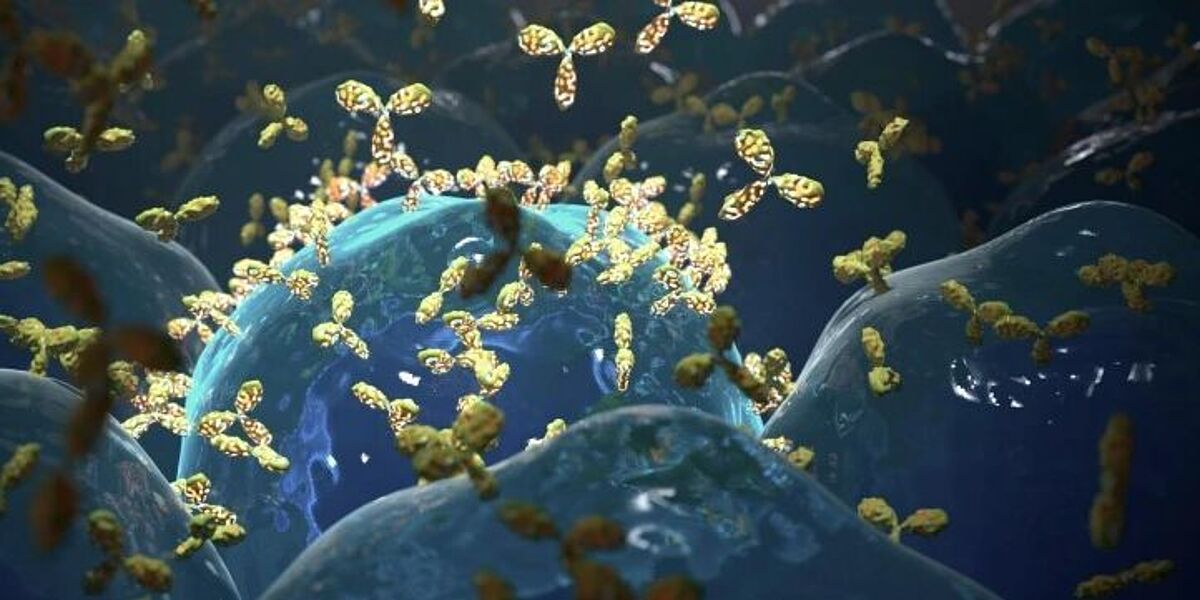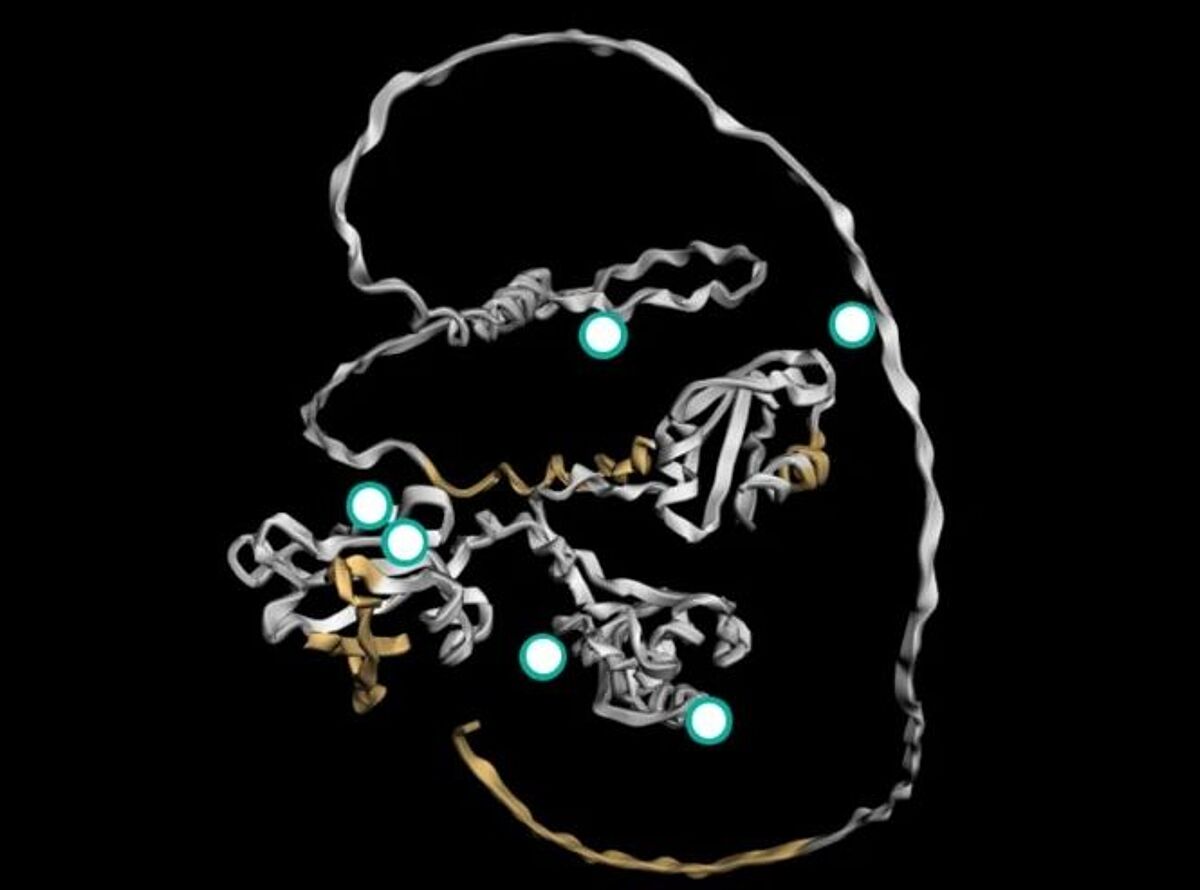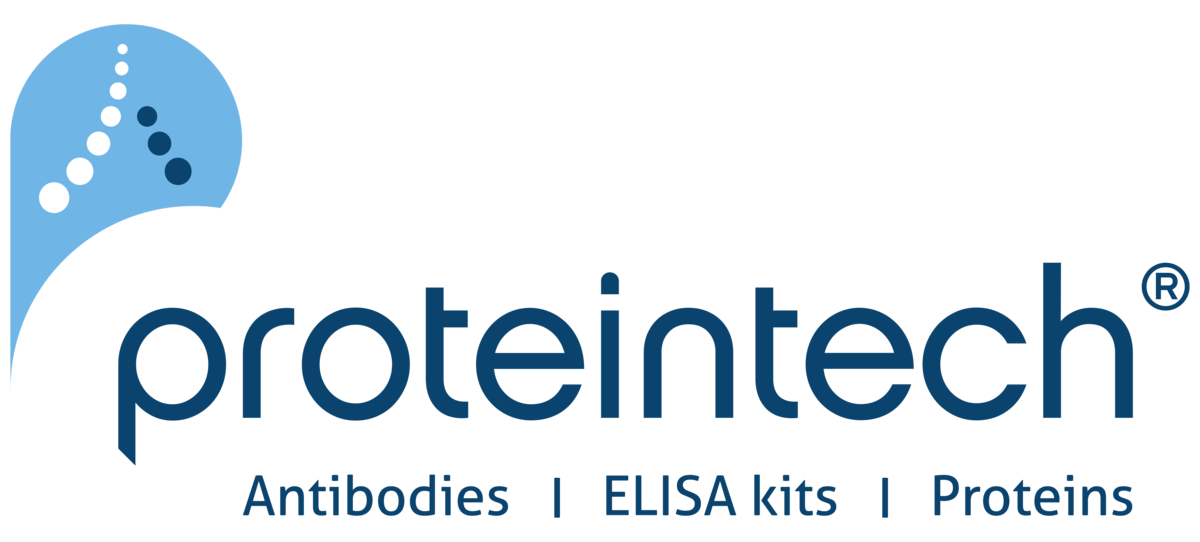The blood proteome holds potential for early disease detection. Recombinant antibodies are helping scientists to finally tap into it.
Despite the hundreds of millions of vials of blood drawn every year for medical testing, scientists have only scratched the surface of its diagnostic potential. The blood proteome — which includes all proteins secreted into the blood — is a vast and largely untapped resource for markers of health or disease. One key analytical challenge is the need to simultaneously detect multiple protein biomarkers in the blood with high sensitivity. Tod White, chief business officer at proteomics company Alamar Biosciences, likens the endeavour to trying to spot patterns of stars in the night sky.
“If you're sitting in San Francisco, there are a lot of bright lights,” he says. “It's very difficult to pick out the unique signals of the stars. If you remove the background light and the noise in the system, you can get much better fidelity and see the whole Milky Way.”

Credit: Nanoclustering/ Science Photo Library/ Getty Images
The method Alamar Biosciences developed to lower this signal-to-noise ratio and increase the sensitivity and specificity of protein detection in the blood is called NULISA. Similar to traditional ELISA sandwich immunoassays, it uses two highly specific antibodies that bind to two distinct epitopes in a protein biomarker.
For NULISA and other antibody-based proteomics approaches to work, researchers need access to antibodies that are sensitive, selective and consistent in lot-to-lot production. “Improving the signal-to-noise ratio only works if you’re getting good binding to your targets of interest,” White says. “High-quality antibodies are the building blocks for everything we do.”
A role for every antibody
There are three major types of antibody preparations: polyclonal, monoclonal and recombinant. For protein biomarker discovery, each type has its place.
Polyclonal antibodies, for instance, bind to many different epitopes within a single protein target, making them highly sensitive.
“If you’re doing a western blot, many researchers tend to use a polyclonal antibody because they can get a quick answer,” says Danielle Callahan, director of global product management at antibody provider Proteintech. Their sensitivity also makes them suitable for the detection of very scarce proteins.
Monoclonal antibodies (mAbs) recognize a single epitope within a target protein, which makes them highly specific for the detection of individual members of protein families. mAb-producing cells are generated by fusing antigen-specific B cells from immunized animals with an immortalized myeloma cell line to form a hybridoma. The hybridoma can be continuously passaged to produce the desired monoclonal antibody.
This production process makes experimental results using mAbs consistent and reliable.
“Researchers tend to follow the reagents that have been used in publications,” says Deepa Shankar, Proteintech’s chief scientific officer. “If a monoclonal antibody has been published for the detection of a certain protein, people tend to want the same one.”
Bridging the gap
Recently, a newer approach to generating antibodies using recombinant DNA has emerged.
With this latest type, called recombinant antibodies (rAbs), the DNA sequences for a desirable rAb are isolated from synthetic or animal sources and then cloned and expressed in host cells. The specificity and affinity are stored in DNA form. So, should problems arise with the host cells being used for expression, antibody producers can return to the original source DNA.
“Using DNA as the starting material for recombinant antibodies ensures long-term reproducibility,” explains Shankar. “A customer is never going to run out.”
Working with recombinant DNA also allows for the intentional engineering and selection of recombinant antibodies. This is key for companies like Alamar, where capture and detection antibody pairs must recognize distinct epitopes.

Credit: Proteintech
“You can select your clones to look for both the specificity and the sensitivity,” adds Shankar. “You can also make fit-for-purpose antibodies, you can add biotin recognition sites — you don't have to have a one-size-fits-all platform. That allows the customer to choose what recombinant antibody product they want to use for what application.”
To support this approach, Proteintech has built Uni-rAb, a vast and rapidly growing portfolio of rAb products. This contributes to the company’s larger proprietary collection of self-manufactured antibodies, which covers two-thirds of the human proteome.
“Our platform for generating rAbs allows us to crank out 2,000 new, validated antibodies a year,” Shankar says. “They are very specific. We know the affinities.”
For scientists like Xiaolei Qiu, Alamar’s head of assay development, this pace and consistency is valuable. “The Uni-rAb collection allows us to investigate new and different biomarkers for our platform,” she says. “The speed of developing new rAbs has been quite impressive.”
Proteintech enhances antibody validation by mapping the specific epitope each antibody recognizes. Integrating this with the National Center for Biotechnology Information and AlphaFold 2 protein structure data, the company developed a 3D epitope viewer. This tool lets researchers explore antibody and epitope options for their protein of interest, aiding in selecting the most suitable antibody for their experiments.
Enabling wider adoption
The specificity, validation and consistent performance of the rAbs have helped shape Alamar’s NULISA into a truly next-generation proteomics technology. “It allows us to only measure a protein bound by both antibodies, in close proximity to each other,” says Qiu. “That adds an extra layer of specificity and precision, and you can detect binding using polymerase chain reaction or next-generation sequencing.”
The technique enables a high degree of multiplexability as well: a study published in Nature Communications in 2023 demonstrates the performance of the assay to measure around 200 cytokines and chemokines from a single 25 µl sample, and the company's commercially available inflammation panel covers more than 250 protein biomarkers1.
Despite their successful use at Alamar, rAbs have not yet been widely adopted. They are often perceived as more expensive than polyclonal and monoclonal antibodies, which is a misconception, says Callahan.
“If you think about having to maintain an animal over so many years, and all of the back work that goes into processing from a host, that's very costly,” she notes. “Recombinant antibodies are comparatively cheap to produce. So, we decided to price our recombinants exactly the same as polyclonals and monoclonals. There should be no difference in the price, because as a company, if we're able to make it cheaper on our end, we should pass that along to the customer.”
“Our mantra is to serve scientists,” Shankar says. “We want things to be easier for them. We want them to have something they can count on.”

Proteintech
Primary antibodies, nanobodies, cytokines & growth factors - all made in-house. Strict validation by western blot, ELISA and siRNA testing.
References
1. Feng W, Beer JC, Hao Q, et al. Nature Commun. 2023;14(1):7238. doi:10.1038/s41467-023-42834-x
This article was originally published by nature custom media. Read the original article here.
